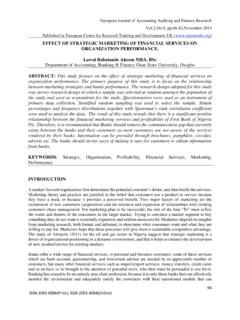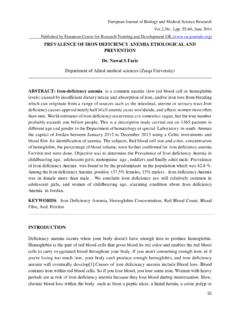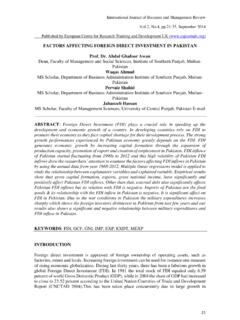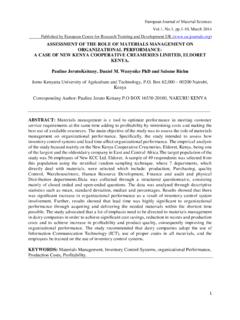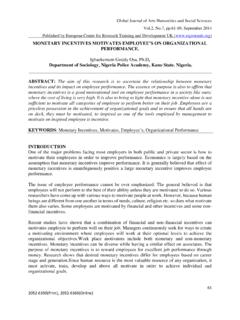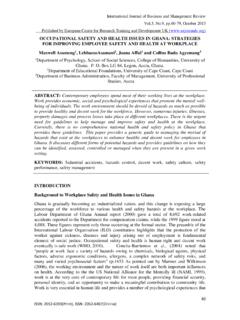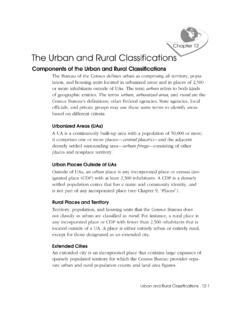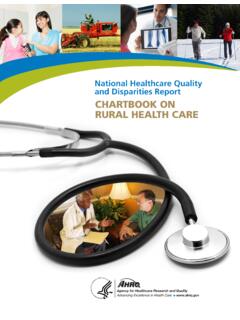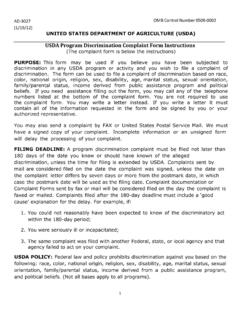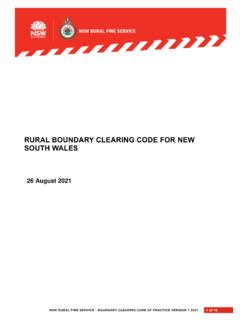Transcription of AN ASSESSMENT OF THE IMPACT OF ROAD TRANSPORT ON …
1 British Journal of Environmental Sciences , , , March 2014 Published by European Centre for Research Training and Development UK ( ) 34 AN ASSESSMENT OF THE IMPACT OF road TRANSPORT ON rural DEVELOPMENT: A CASE STUDY OF OBOKUN LOCAL GOVERNMENT AREA OF OSUN STATE, NIGERIA. Adedeji, ; Olafiaji, ; Omole, *; Olanibi, ; and Yusuff Lukman Department of Urban and Regional Planning, School of Environmental Technology, Federal University of Technology Akure, Ondo state, Nigeria. ABSTRACT: rural TRANSPORT and infrastructure development in Nigeria have being topical issues and have been identified by many as crucial components for economic development of the country.
2 In light of the above, the paper adopted survey method to gather data while secondary sources of data were also utilised to argument the later. A total of three hundred set of questionnaires were administered in three randomly selected communities in the study area. The analysis of the data revealed an inequality in the provision of road infrastructure and rehabilitation of roads in the area, resulting in disparities in the level of development. The poor condition of roads in the area is having negative effects on agricultural activities which is the major source of income of residents, thereby increasing the poverty rate.
3 The study recommendations integrated rural development strategy, empowerment of the grassroots dwellers by the government to enhance grassroots development. Other recommendations include the establishment of road maintenance unit at the local government level to ensure that existing roads are kept in good condition, encourage private-public participation in rural road development and finally, community efforts should be encouraged through self-help approach. KEYWO RDS: rural Area, Accessibility, Poverty, Self- Help Approach and Development. INTRODUCTION Generally, rural areas server as the base for the production of food and fibre, the major sources of capital formation for a country, and a principal market for domestic manufactures (Olayiwola and Adeleye, 2005).
4 In general terms, the rural areas engage in primary activities which form the foundation for any economic development. Despite this level of contribution to economic development, rural areas have been neglected in terms of development which has made it non- attractive to live in and also increase poverty level in the rural areas. This is justified by the high correlation that exists between rural living and poverty with this situation particularly exacerbated in developing countries (World Bank, 1994). Sustainable rural development is a function of a number of factors in which transportation is of importance.
5 Efficient and effective rural transportation serves as one of the channels for British Journal of Environmental Sciences , , , March 2014 Published by European Centre for Research Training and Development UK ( ) 35 the collection and exchange of goods and services, movement of people, dissemination of information and the promotion of rural economy. Along this line, Owen (1968) stated that Immobility perpetrates poverty , effective transportation eases accessibility to inherent potentials of rural areas which could be harnessed for the development of its economy.
6 In other words, rural transportation provision forms an intrinsic part of rural development strategies, serving as a mechanism and catalyst for rural transformation through the reinforcement of rural development and contributes to poverty reduction by enhancing both equity and efficiency outcomes. In Nigeria, the issue of rural transportation development has continued to be of national importance. For instance, most of the rural roads are in poor condition, and this has imposed significant cost on the national economy especially to the agricultural activities due to increased vehicle operating costs and travel times (Akintola, 2007).
7 The Federal Government of Nigeria (FGN) has embarked on various programmes at one time or the other to ensure the provision of adequate TRANSPORT facilities to meet the needs of the rural population but these programmes have not been able to achieve hundred percent successes. The importance of TRANSPORT facilities in rural areas can be justified from both social and economic perspectives. Socially, a significant proportion of Nigeria population lives in the rural areas and demands various forms of TRANSPORT to facilitate socio-political interactions.
8 Secondly, the rural areas are indispensable in the supply of food, raw materials to urban centres and the country s economic growth as a whole. In light of the above, it becomes expedient to examine rural transportation problems, so that the extent of the problems can be known, and possible solution proffered to achieving sustainable rural development. METHODOLOGY In examining the IMPACT of road transportation on the development of the study area, survey approach was adopted and data were collected through primary sources, which consisted of personal observation and questionnaire administration.
9 A number of factors were assessed using a structured multiple-choice questionnaire. Information on the existing road TRANSPORT facilities in the area, the economic activities of the inhabitants and the causes of various transportation problems in the area were obtained through the administration of the structured questionnaire. Randomized systematic stratified sampling technique was applied in the selection of communities adopted for the survey; three communities in the local government area were randomly selected for the survey namely Esa-oke, Ilahun, and Esa-Odo.
10 Three sets of questionnaires were designed in gathering information for this study. The first set of questionnaire was designed to obtain information from the Head of Works Department at the Local Government Headquarters on the provision and maintenance schedule of roads in the area. Considering the fact that public transportation is the dominant means of transportation in rural areas. The second set of questionnaire was designed to obtain British Journal of Environmental Sciences , , , March 2014 Published by European Centre for Research Training and Development UK ( ) 36 information from the commercial drivers in the area to assess their level of satisfaction or difficulties concerning the condition of roads in the area.



